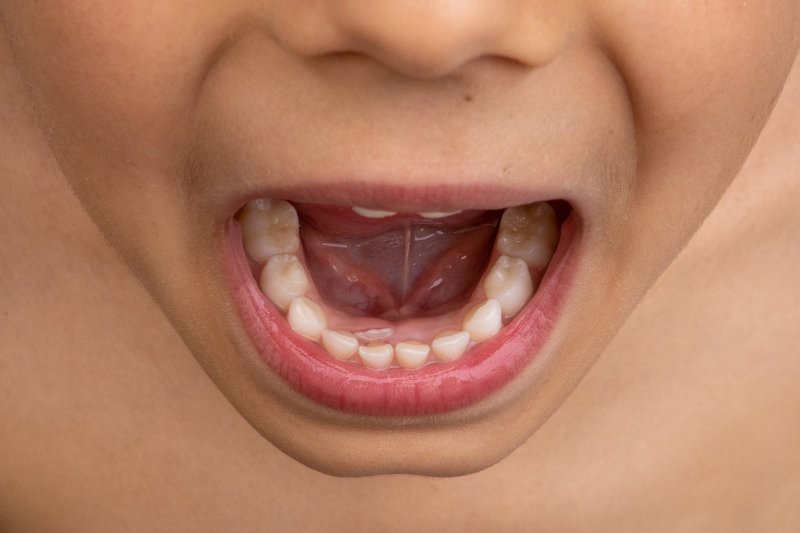
It is an exciting time when the Tooth Fairy becomes a welcome guest in your home. With each baby tooth that falls out, your child is likely to be a few dollars richer and one step closer to achieving their permanent smile. While you may be sad to watch their childlike grin slowly fade away, you might be a bit shocked should you notice a second row of teeth erupting behind those primary chompers that have yet to fall out. Keep reading to learn about these “shark teeth” and why you don’t need to worry.
What are “Shark Teeth?”
Shark teeth, as they are known, are used to describe adult teeth that begin to erupt behind primary ones that have not yet fallen out.
These can develop when your child is between 5 and 7 years of age, and they are most commonly found along the lower arch. Although some have been seen along the upper row of teeth.
This happens because the roots of your child’s baby teeth have yet to dissolve, making it impossible for adult ones to erupt in their proper place. As a result, a second row forms.
What Can Cause Shark Teeth to Form?
While the most obvious cause is your child’s baby tooth or teeth refusing to fall out on their own, other potential reasons include overcrowding and genetics.
If your child’s mouth lacks the necessary space for permanent teeth to erupt successfully, shark teeth can form. Also, if other members in their family had an extra row of permanent chompers show up, there’s a good chance it will also occur in your child.
When Should You Take Your Child to See the Dentist?
Generally, this type of eruption is nothing to be concerned about. It might look “odd,” but it’s actually quite normal. Instead of rushing your child to the emergency dentist, start by encouraging them to try and wiggle their baby tooth. This can help loosen it so that it will eventually fall out on its own.
However, if you begin to notice any of the following symptoms, go ahead and take your child to see their pediatric dentist:
- Discomfort that is more severe than the general “it hurts” explanation when wiggling the tooth
- Their baby tooth isn’t loosening, even after trying to eat certain foods or wiggling it with their finger or tongue
- The shark teeth appear to form behind your child’s molars, which can potentially cause overcrowding
Scheduling an appointment can help mitigate the potential for poor dental alignment, cavities, gum disease, and even tooth loss in the future.
In most cases, your child’s baby tooth will fall out, and the shark tooth will move into place. However, if you are ever concerned and want the reassurance of a trusted professional, never hesitate to contact their pediatric dentist for guidance and instruction.
About the Author
Dr. Linda Steele is a pediatric dentist in Coppell with nearly three decades of experience. Providing preventive services to young patients, she regularly sees children with shark teeth. A common occurrence among growing smiles, these formations can be unnerving for parents and patients at first; however, Dr. Steele and her team can ease any concerns by discussing the reality of these situations and why, in most situations, the problem will be resolved on its own. If you notice a second row of teeth developing inside your child’s mouth, visit our website or call (972) 640-7432.

